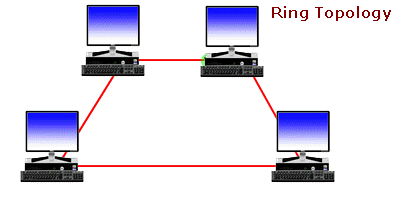Zeal For Wisdom
Windows Operating Systems
An Operating system (OS) is a software which acts as an interface between the end user and
computer hardware. Every computer must have at least one OS to run other programs. An
application like Chrome, MS Word, Games, etc needs some environment in which it will run and
perform its task. The OS helps you to communicate with the computer without knowing how to
speak the computer's language. It is not possible for the user to use any computer or mobile
device without having an operating system. Majority of home users use a Windows based
machine. Most of today’s applications and games are designed to run solely on Microsoft
systems.
Functions of an Operating SystemIn an operating system software performs each of the function:1. Process management: Process management helps OS to create and delete processes. It also provides mechanisms for synchronization and communication among processes. 2. Memory managementMemory management module performs the task of allocation and de-allocation of memory space to programs in need of this resources. 3. File managementIt manages all the file-related activities such as organization storage, retrieval, naming, sharing, and protection of files. 4. Security:Security module protects the data and information of a computer system against malware threat and authorized access. 5. Command interpretation: This module is interpreting commands given by the user and acting system resources to process that commands. 6. Job accounting: Keeping track of time & resource used by various job and users. 7. Communication management: Coordination and assignment of compilers, interpreters, and another software resource of the various users of the computer systems. Introduction to Microsoft WindowsThe oldest of all Microsoft’s operating systems is MS-DOS (Microsoft Disk Operating System). MS-DOS is a text-based operating system. Users have to type commands rather than use the more friendly graphical user interfaces (GUI’s) available today. Despite its very basic appearance, MS-DOS is a very powerful operating system. There are many advanced applications and games available for MS-DOS. A version of MS-DOS underpins Windows. Many advanced administration tasks in Windows can only be performed using MS-DOS. HistoryWindows versions through the years
1985: Windows 1.0The history of Microsoft Windows dates back to 1985, when Microsoft released Microsoft Windows Version 1.01. Microsoft’s aim was to provide a friendly user-interface known as a GUI (graphical user interface) which allowed for easier navigation of the system features. Windows 1.01 never really caught on. The release was a shaky start for the tech giant. Users found the software unstable. (The amazing thing about Windows 1.01 is that it fitted on a single floppy disk). However, the point-and-click interface made it easier for new users to operate a computer. Windows 1.0 offered many of the common components found in today's graphical user interface, such as scroll bars and "OK" buttons.
1987: Windows 2.0 and 2.11Windows 2.0 was faster, more stable and had more GUI features. The GUI was very slightly improved but still looked too similar to Windows 1.01.The system introduced the control panel and ran the first versions of Excel and Word. Windows 2.0 supported extended memory, and Microsoft updated it for compatibility with Intel's 80386 processor. It was during this time that Microsoft became the largest software vendor in the world, just as computers were becoming more commonplace. The fact that Windows systems were user-friendly and relatively affordable was a contributing factor to the growing PC market.
1990: Windows 3.0Windows 3.0 supported 16 colors and included the casual games familiar to most Windows users: Solitaire, Minesweeper and Hearts. Games that required more processing power still ran directly on MS-DOS. Exiting to DOS gave games direct hardware access made more system resources available. Microsoft made an enormous impression with Windows 3.0 and 3.1. Graphics and functionality were drastically improved. The Windows 3 family provided multimedia capabilities as well as vastly improved graphics and application support. Building on the success of Windows 3.x, Microsoft released Microsoft Windows 3.11 for Workgroups. This gave Windows the ability to function on a network.
1993: Windows New Technology (NT)Windows NT's release marked the completion of a side project to build a new, advanced OS. NT was 32-bit and had a hardware abstraction layer. DOS was available through the command prompt, but it did not run the Windows OS. Microsoft designed NT as a workstation OS for businesses rather than home users. The system introduced the Start button.
1995: Windows 95In 1995 Windows went through a major revamp and Microsoft Windows 95 was released. This provided greatly improved multimedia and a much more polished user interface. The now familiar desktop and Start Menu appeared. Internet and networking support was built in. Although Windows 95 was a home user operating system, it proved to be very popular in schools and businesses. Windows 95 facilitated hardware installation with its Plug and Play feature. Microsoft also unveiled 32-bit color depth, enhanced multimedia capabilities and TCP/IP network support.
1998: Windows 98Microsoft Windows 98 was very similar to Windows 95, it offered a much tidier display and enhanced multimedia support. Microsoft improved speed and Plug and Play hardware support in Windows 98. The company also debuted USB support and the Quick Launch bar in this release. DOS gaming began to wane as Windows gaming technology improved. The popularity of the OS made it an attractive target for malware. Microsoft integrated web technology into the Windows user interface and built its own web browser into the desktop.
2000: Windows Millennium Edition (ME)Windows ME (Millennium Edition) was the last use of the Windows 95 codebase. Its most notable new feature was System Restore. Many customers found this release to be unstable. Some critics said ME stood for "mistake edition." Microsoft released the professional desktop OS Windows 2000 (initially called NT 5.0) in the same year for the business market. Improvements to the overall operating system allowed for easier configuration and installation. Microsoft based this OS on the more stable Windows NT code. Some home users installed Windows 2000 for its greater reliability. Microsoft updated Plug and Play support, which spurred home users to switch to this OS. One big advantage of Windows 2000 was that operating system settings could be modified easily without the need to restart the machine. Windows 2000 proved to be a very stable operating system that offered enhanced security and ease of administration.
2001: Windows XPMicrosoft delivered Windows XP as the first NT-based system with a version aimed squarely at the home user. Home users and critics rated XP highly. The system improved Windows appearance with colorful themes and provided a more stable platform. Microsoft virtually ended gaming in DOS with this release. DirectX-enabled features in 3D gaming that OpenGL had difficulties with. XP offered the first Windows support for 64-bit computing, but it was not very well supported, lacking drivers and applications to run.
2006: Windows VistaMicrosoft hyped Windows Vista after the company spent a lot of resources to develop a more polished appearance. Vista had interesting visual effects but the OS was slow to start and run. Vista's flaws -- coupled with the fact that many older computers lacked the resources to run the system -- led to many home and business users staying with XP.
2009: Windows 7Microsoft built Windows 7 on the Vista kernel. Windows 7 picked up Vista's visual capabilities but featured more stability. To many end users, the biggest changes between Vista and Windows 7 were faster boot times, new user interface and the addition of Internet Explorer 8. With true 64- bit support and more Direct X features, Windows 7 proved to be a popular release for Windows users.
2012: Windows 8Microsoft released Windows 8 with a number of enhancements and debuted its tilebased Metro user interface. Windows 8 took better advantage of multicore processing, solid-state drives (SSD), touchscreens and other alternate input methods.
2015: Windows 10Microsoft announced Windows 10 in September 2014, skipping Windows 9 and launched on July 2015. Version 10 includes the Start menu, which was absent from Windows 8. A responsive design feature called Continuum adapts the interface depending on whether the user works with a touch screen or a keyboard and mouse for input. New features like an onscreen back button simplified touch input. Microsoft designed the OS to have a consistent interface across devices including PCs, laptops and tablets. |
Zeal For Wisdom
Learn Today For Better Tomorrow














